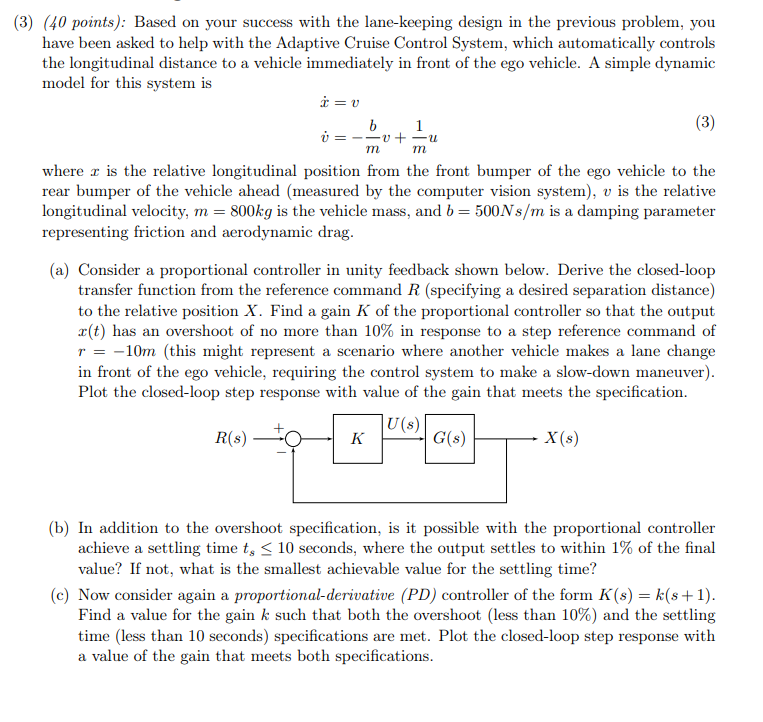Answered step by step
Verified Expert Solution
Question
1 Approved Answer
(3) (40 points): Based on your success with the lane-keeping design in the previous problem, you have been asked to help with the Adaptive

(3) (40 points): Based on your success with the lane-keeping design in the previous problem, you have been asked to help with the Adaptive Cruise Control System, which automatically controls the longitudinal distance to a vehicle immediately in front of the ego vehicle. A simple dynamic model for this system is x = v b v m m (3) where x is the relative longitudinal position from the front bumper of the ego vehicle to the rear bumper of the vehicle ahead (measured by the computer vision system), v is the relative longitudinal velocity, m = 800kg is the vehicle mass, and b = 500Ns/m is a damping parameter representing friction and aerodynamic drag. (a) Consider a proportional controller in unity feedback shown below. Derive the closed-loop transfer function from the reference command R (specifying a desired separation distance) to the relative position X. Find a gain K of the proportional controller so that the output x(t) has an overshoot of no more than 10% in response to a step reference command of r = -10m (this might represent a scenario where another vehicle makes a lane change in front of the ego vehicle, requiring the control system to make a slow-down maneuver). Plot the closed-loop step response with value of the gain that meets the specification. R(s) U(s) K G(s) X(s) (b) In addition to the overshoot specification, is it possible with the proportional controller achieve a settling time t, 10 seconds, where the output settles to within 1% of the final value? If not, what is the smallest achievable value for the settling time? (c) Now consider again a proportional-derivative (PD) controller of the form K(s) = k(s+1). Find a value for the gain k such that both the overshoot (less than 10%) and the settling time (less than 10 seconds) specifications are met. Plot the closed-loop step response with a value of the gain that meets both specifications.
Step by Step Solution
There are 3 Steps involved in it
Step: 1

Get Instant Access to Expert-Tailored Solutions
See step-by-step solutions with expert insights and AI powered tools for academic success
Step: 2

Step: 3

Ace Your Homework with AI
Get the answers you need in no time with our AI-driven, step-by-step assistance
Get Started


